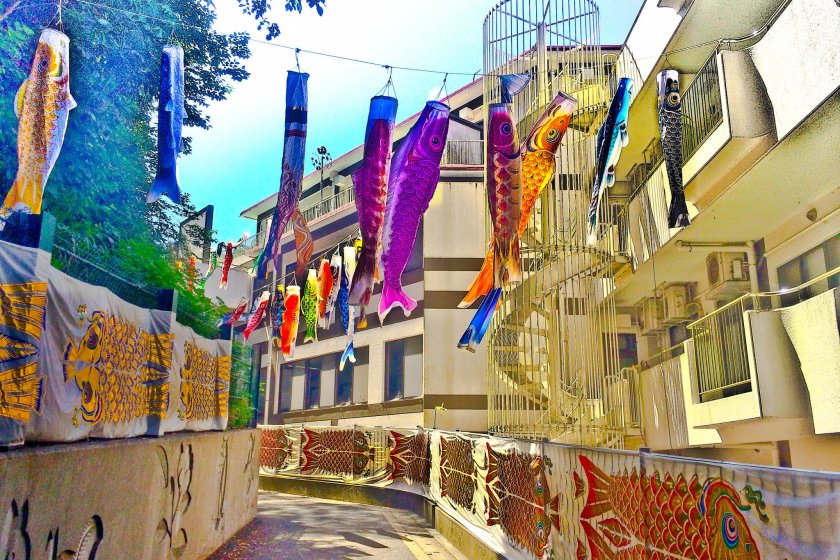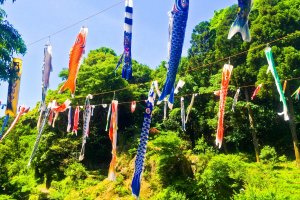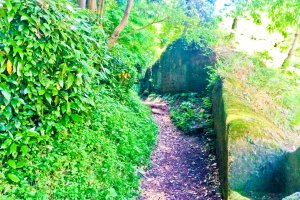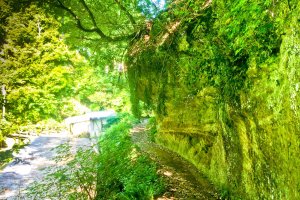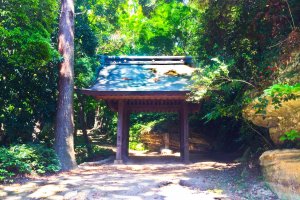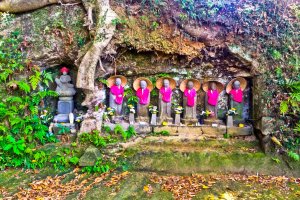Like many other people in Yokohama, whenever I hear the mention of “Zushi”, (that’s with a “Z” not an “S” as in the raw fish), the first thought that comes to mind is of a well known beach in southern Kanagawa.
Situated within an affluent neighborhood on the western edge of the Miura Peninsular, Zushi beach is a popular but overcrowded destination packed with sun dwellers, tattoo wearers and male chest bearers. In stark contrast to this is Jimmu Temple which despite being only one train stop away, offers a very different yet enjoyable experience.
Starting from Jinmuji Station (same name, different spelling) on the Keikyu Line, this pleasant walk passes through a beautiful stretch of forest rich in history and culture with an added dose of adventure.
This is definitely one place where you can find some real peace and tranquility without the hoards of camera flashing tourists as seen in other places like nearby Kamakura.
To start this walk head out of the station through the only exit and turn left, following the main road for about 8 minutes until you see a school sports ground on the right with a big sign pointing to the start of the course, (even I didn’t have problems finding this!).
Continue along this path, passing along the front entrance of the school until you reach a rather curious looking block of apartments which somehow looks out of place being here. The path then leads downwards into a forest marking the start of the course.
This already picturesque area was made even more impressive on this occasion by being beautifully decorated with many colorful carp banners, usually flown to celebrate Children`s day on the 5th May.
When walking through the forest you will immediately notice that the path cuts through several large boulders and runs along a number of cliff faces. Whilst this may appear a little intimidating at first glance this is a perfectly safe course to follow. Be sure to follow the signposts for Jimmu Temple, (神武寺).
About half an hour later you should see a roofed gateway leading to the temple complex. Walk under this gate where you will immediately notice many stone statues decorated in bright red clothing. Known in Japanese as “Jizu”, these are the guardian deity of children.
To the left of these statues is a long staircase leading up towards an impressive looking gate and the main temple area beyond. Upon entering here you cannot help but be moved by the sheer beauty and tranquility of this place. Immaculately built stone sculptures along with a beautiful pagoda set within a forested landscape provide a rare opportunity to find some genuine peace and tranquility within a very spiritual setting.
Interestingly enough, this temple is deeply rooted in history. Although rumored to originally date back to the eighth century, its history can be traced to 1590, when many Samurai sought refuge here from Odawara Castle that was under siege from Emperor Hideyoshi`s forces.
Despite being destroyed by the pursuing army, this temple was quickly re-built but on a much smaller scale to avoid drawing attention to itself. This legacy of fleeing Samurai can therefore clearly be seen as the main contributing factor for this temple’s brilliant inconspicuousness.
From the top of the main complex you are presented with several options of where to go next. If you want to go to Kamakura or Zushi beach, simply follow the signs for Higashi-Zushi Station (東逗子駅), on the JR Yokosuka Line, which is about a fifteen minute walk. If however, you want to experience some adventure then I would definitely recommend continuing on for another twenty minutes along the path to Mount Takatori, (高取山).
Along this path you will be confronted with bigger boulders, more cliff top passes, excellent scenery and a steep but relatively easy rock face that has to be climbed by using one of the attached chains.
When you have recovered from this excitement you should reach a large, open area. This is the peak of Mount Takatori where you will see an observation tower and some rock climbing walls with many people trying to enhance their Spiderman skills.
The short walk up to the observation tower provides some truly fantastic panoramic views of Sagami and Tokyo bay. On clear days it is possible to see Tokyo Skytree. Surprisingly enough, this was something I was fortunate enough to do although very briefly.
The area below this tower is an excellent place to have lunch with plenty of sights to keep you occupied whilst munching away. Once your stomach is full you can finish this hike by simply following the signs to Keikyu Taura Station (京急田浦駅). This is a pleasant one hour walk along a gentle downhill path.
When you reach the station you either take the Keikyu Line back to Yokohama, taking about 30 minutes and costing 310 Yen. Alternatively, if you’re not quite ready to head home then you could catch a southbound train to Miura Beach, costing 290 Yen and taking about the same amount of time. Although you won’t find such spirituality here you will at least find many beach dwellers amongst other things.
